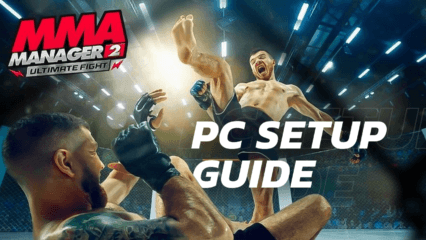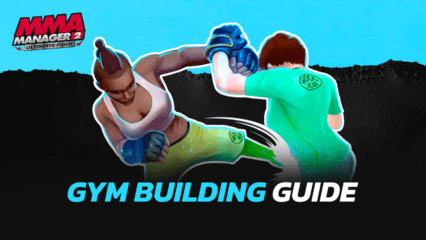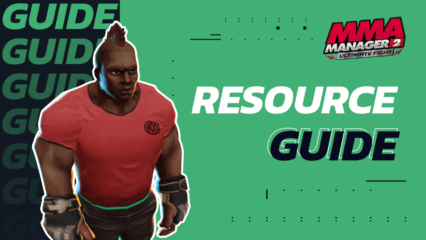A Beginner’s Guide to MMA Manager 2: Ultimate Fight
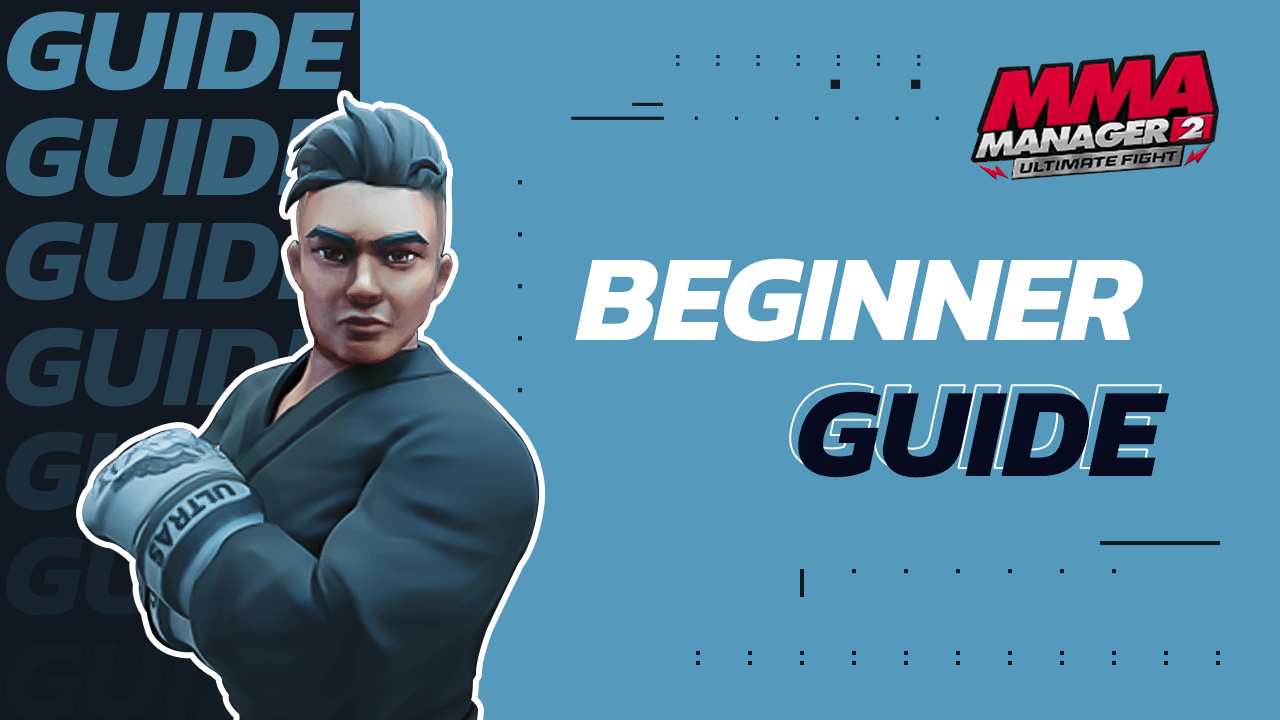
Have you ever wanted to create your own MMA fighter and even your own MMA gym? Fortunately, Your dreams can now become true when you play MMA Manager 2: Ultimate Fight which you can install and play now on your PC or Mac with BlueStacks. The game offers you the ultimate MMA manager experience by allowing you to customize all your fighters and create your very own gym with various equipment and decorations. There is a lot to unpack and learn about in MMA Manager 2: Ultimate Fight but with this beginners’ guide, we’ll guide you in every step of the way to develop your own world MMA champion.
Currencies
The game has several currencies that you’ll use throughout the game to upgrade fighters, unlock new gym equipment and facilities, and even instantly finish training.
- Cash – the main currency of the game which can be used to buy fighters, coaches, trainers, and all sorts of upgrades for your gym.
- Credits – the premium currency which can be used to speed up training, buy premium gym equipment, and much more items that cannot be bought with cash.
- Focus Points – used to buy bonus fighter abilities such as increased damage and health.
- Prestige – the “fame level” of your gym which allows you to unlock equipment and fighters. A player can have a maximum of 12,000,000 Prestige.
The Gym
MMA Manager 2: Ultimate allows you to create your very own MMA gym from scratch. This is where your fighters reside and train for upcoming fights. As you play the game, you can expand your gym to include more equipment and house more fighters.
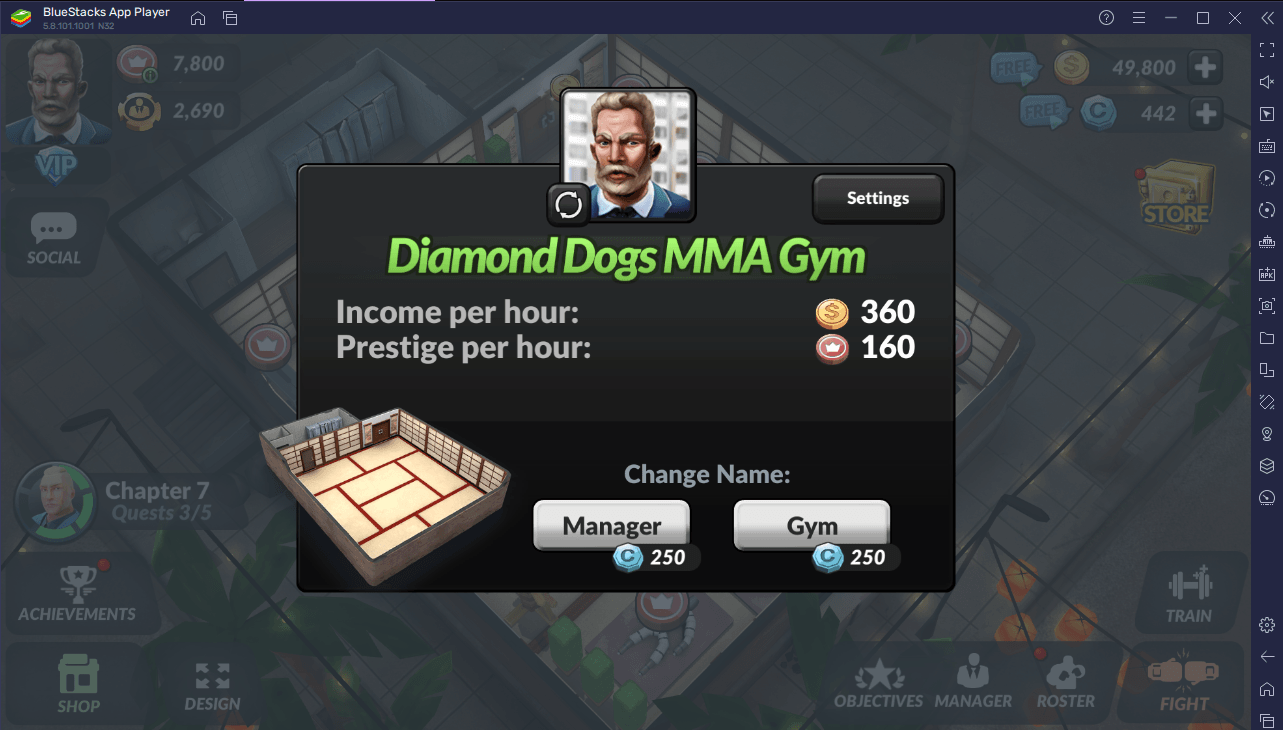
You can name your gym and yourself – the gym manager – and select an avatar (as of writing, you cannot upload a custom avatar). This information is what will be displayed in the game’s leaderboards and chat rooms. You can change your manager’s name and gym name for 250 credits.
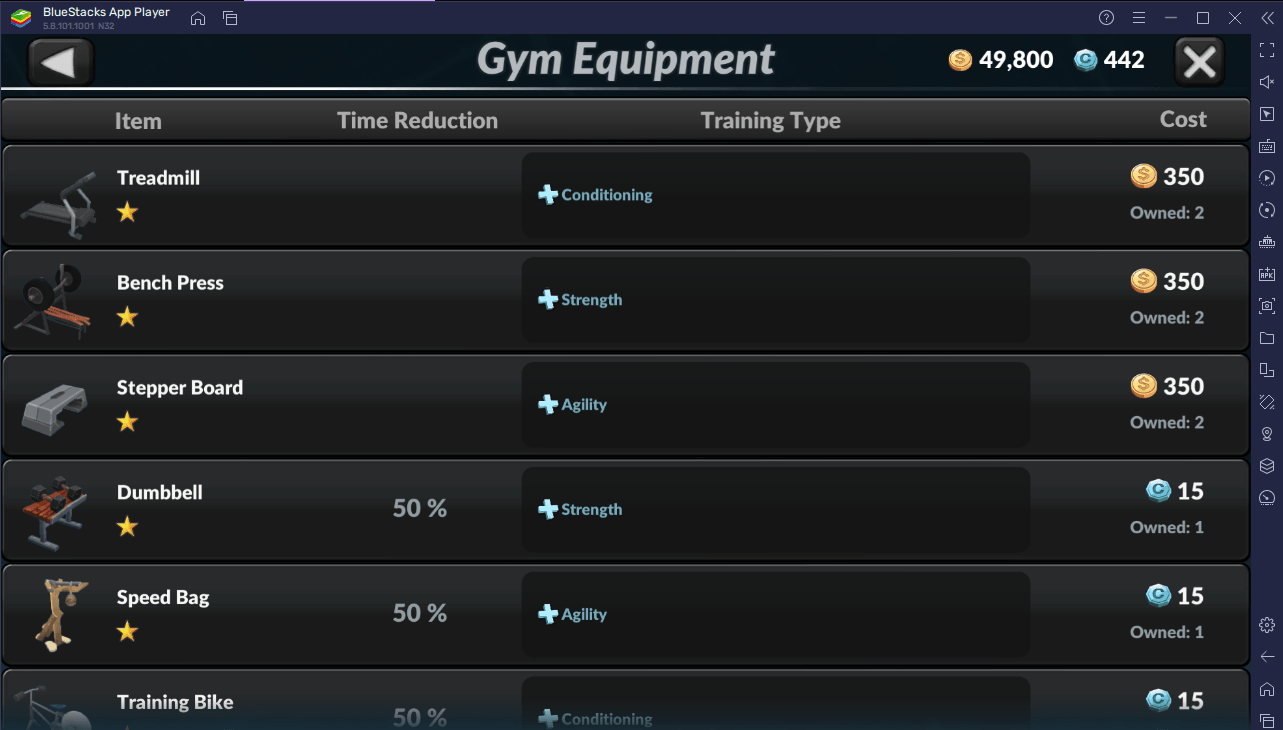
Multiple equipment like treadmills, benches, punching bags, and the like can be bought to train your fighters. Each gym equipment caters to a specific fighter skill (i.e., punching bag is used to train punching) so make sure there’s enough for everyone.
Your gym generates a set amount of cash and prestige every hour until the cap is reached. cash can be obtained from the gym’s front door whereas prestige can be gathered from each gym equipment. Be diligent in collecting these to earn cash and prestige quickly.
Learn how to create a proper MMA gym with this gym building guide.
Fighters
As an MMA manager, your fighters are practically like your own children. You must be responsible in training them consistently and getting them into fights so they can evolve into world champions.
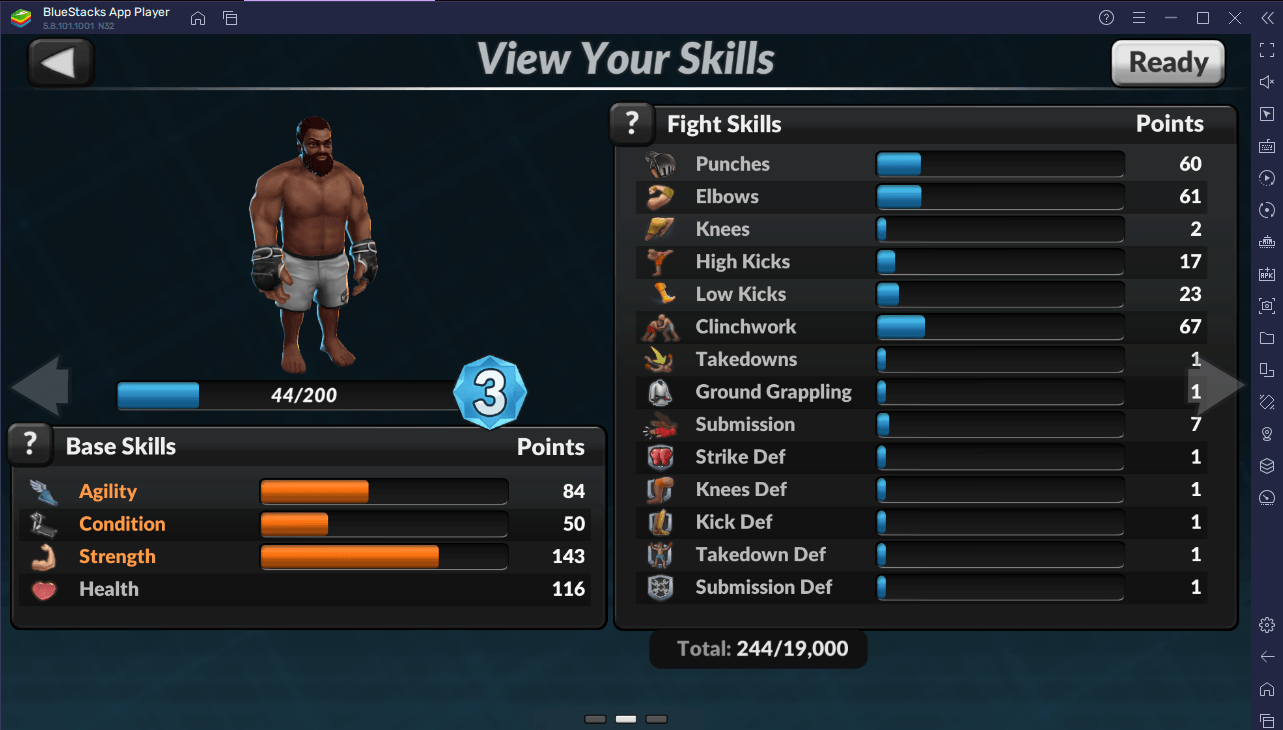
Your fighter’s characteristics are categorized into two: skills and base stats. Skills pertaining to specific MMA skills such as punches, submissions, kicks (low and high), and much more. Base stats pertain to three variables:
- Strength – determines damage output of each successful strike
- Agility – determines the initiative of the fighter to attack
- Condition – determines max health, health regeneration, takedown defenses, clinch work, submissions, and resistance against critical strikes
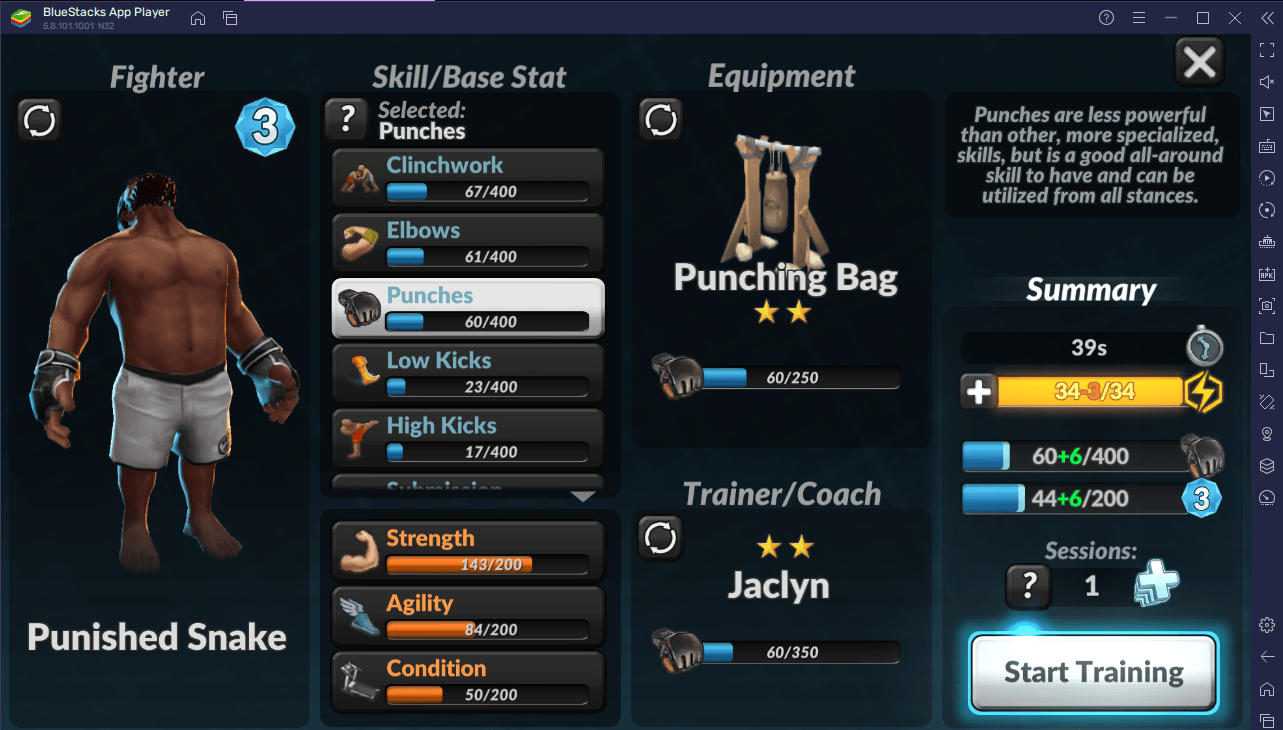
Each skill and base stat can be upgraded with gym equipment and the appropriate coaches/trainers until the cap is reached. This cap is increased when the fighter levels up. A fighter levels up by gaining EXP from training.
To know more details about fighters and how to train them efficiently, read this separate fighter training guide.
Coaches and Trainers
Having just gym equipment is not enough to train your fighters. You must hire professional coaches and trainers as well to help your fighters train.
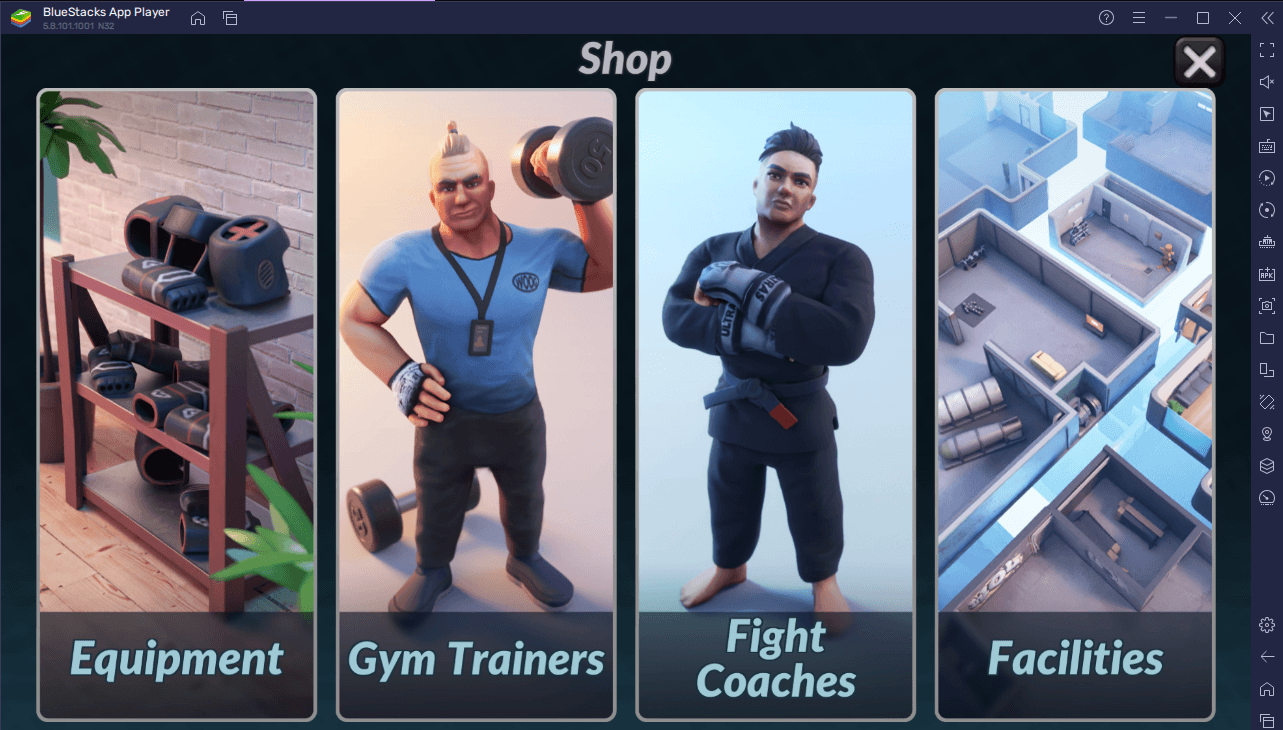
There are two types of coaches in the game: gym trainers and fight coaches. They can be hired from the in-game shop with cash. Gym trainers train the base stats (strength, agility, condition) whereas fight coaches train skills (i.e., punches, kicks). Note that one coach cannot teach everything in their field so you must hire coaches that are qualified to train specific skills or base stats. Moreover, a coach becomes unavailable when they are training a fighter so make sure to hire enough for all your fighters.
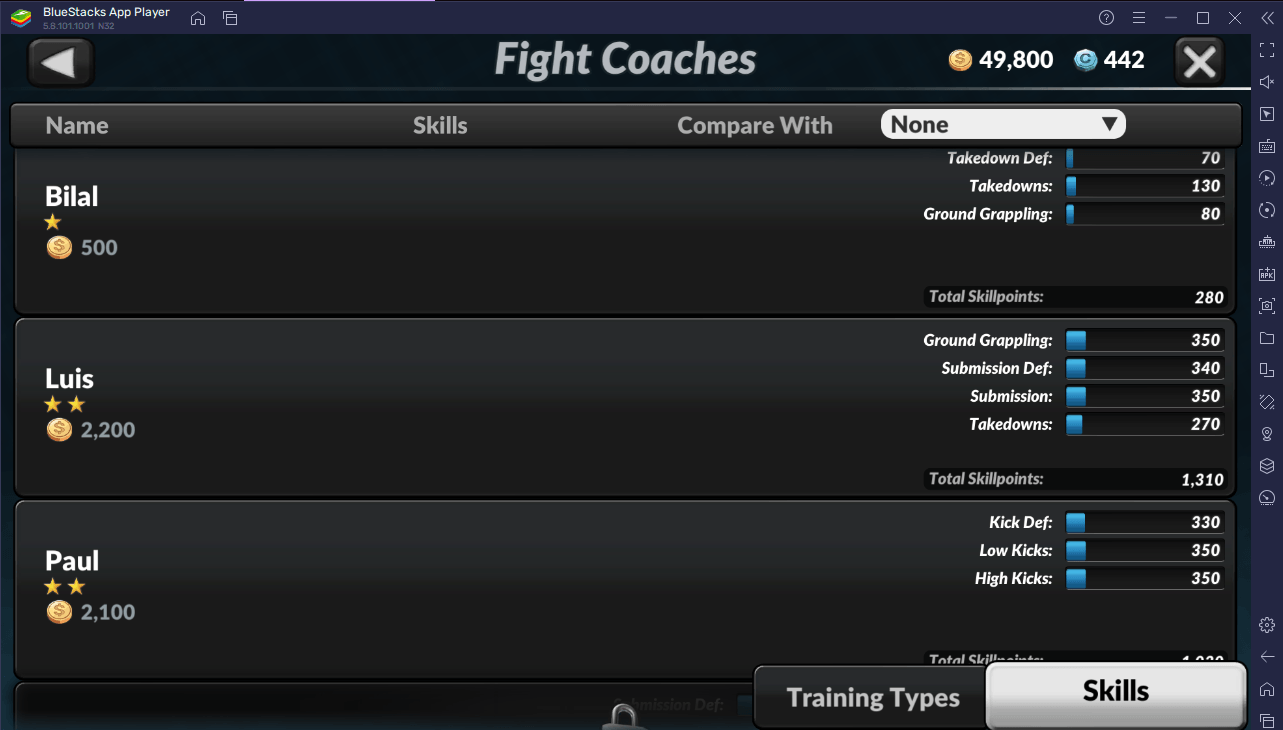
Training with a coach adds points to a fighter’s skill or base stat but the total amount of points they can give are limited. This is indicated by the “Total Skillpoints” variable. Above that, you can see how any points are allocated to each skill/base state. In the example above, coach Bilal can only give a maximum of 70 takedown def points, 130 takedown points, and 80 ground grappling points; and this totals to 280 skillpoints.
Entering Fights
Getting your fighters into actual fights is the bread and butter of MMA Manager 2: Ultimate Fight. This is where your fighter can apply all of their training and win rewards for the gym upon winning.
There are currently four fight modes in the game: campaign, sparring, professional league, and fight club. The ones you’ll be playing the most are campaign and professional league as these are the ones that can earn money and other resources. The in-game quests may also require you to attain a certain number of victories in these fights.
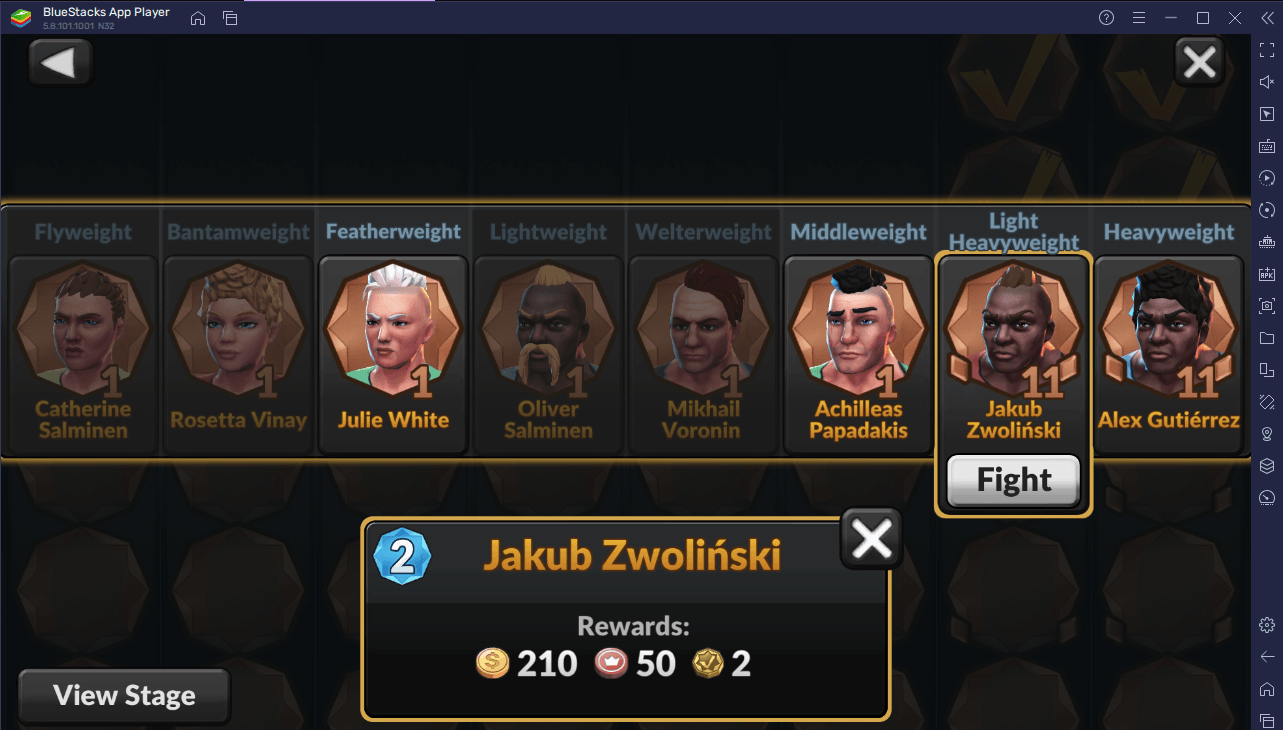
The campaign and professional allows your fighters to fight other competitors within their own weight category (flyweight, bantamweight, featherweight, lightweight, welterweight, middleweight, light heavyweight, heavyweight). For every win, cash, prestige, and campaign points (used to unlock bonus rewards) are won and a more challenging fighter also becomes available to fight. The stronger the opponent, the bigger the rewards.
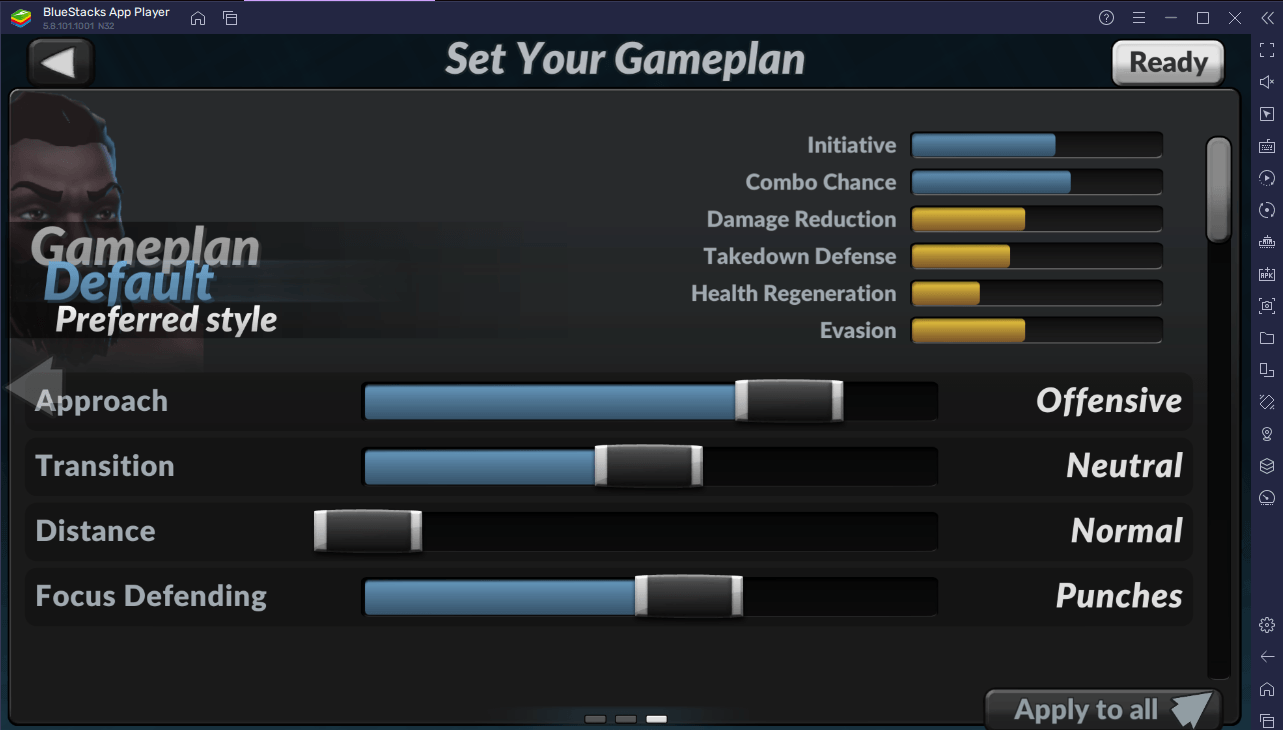
Before each fight, you can view the opponent’s stats and identify what attacks they’re more likely to use and what attacks they’re most likely to defend (and also what they’re most vulnerable to). With this information, you can customize your fighter’s game plan, which is a set of editable parameters that determine their fighting style for the round. These parameters include but are not limited to their approach (defensive or offensive) and the priority of attacks. Each gameplan must consider the opponent’s stats as well as your fighter’s own skills and base stats.
To know more about strategically tweaking your fighter’s gameplan, check this guide.


